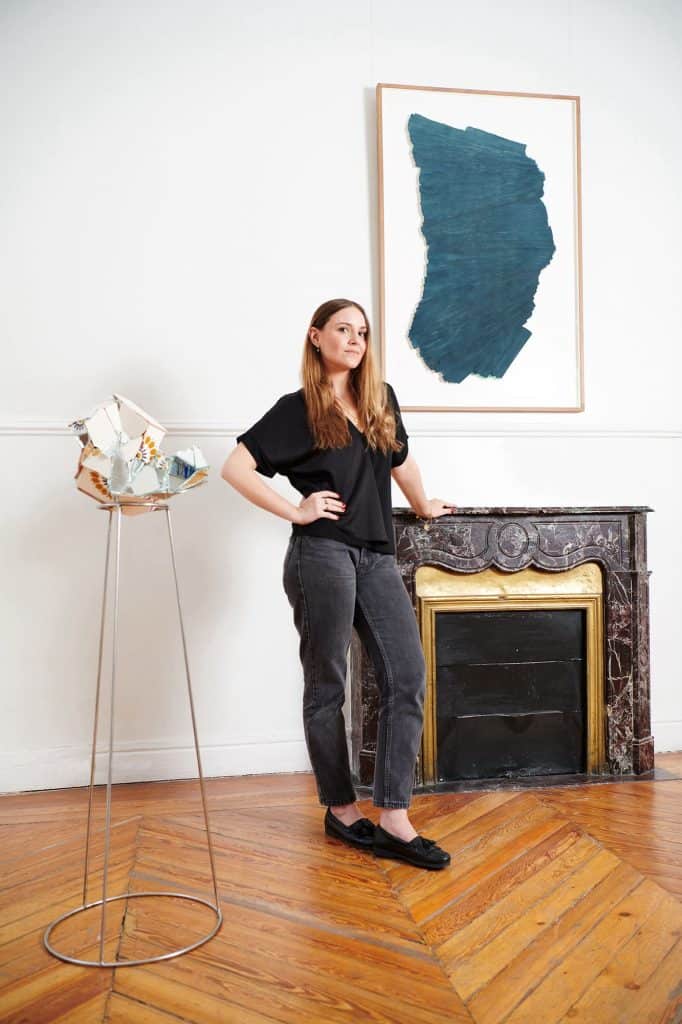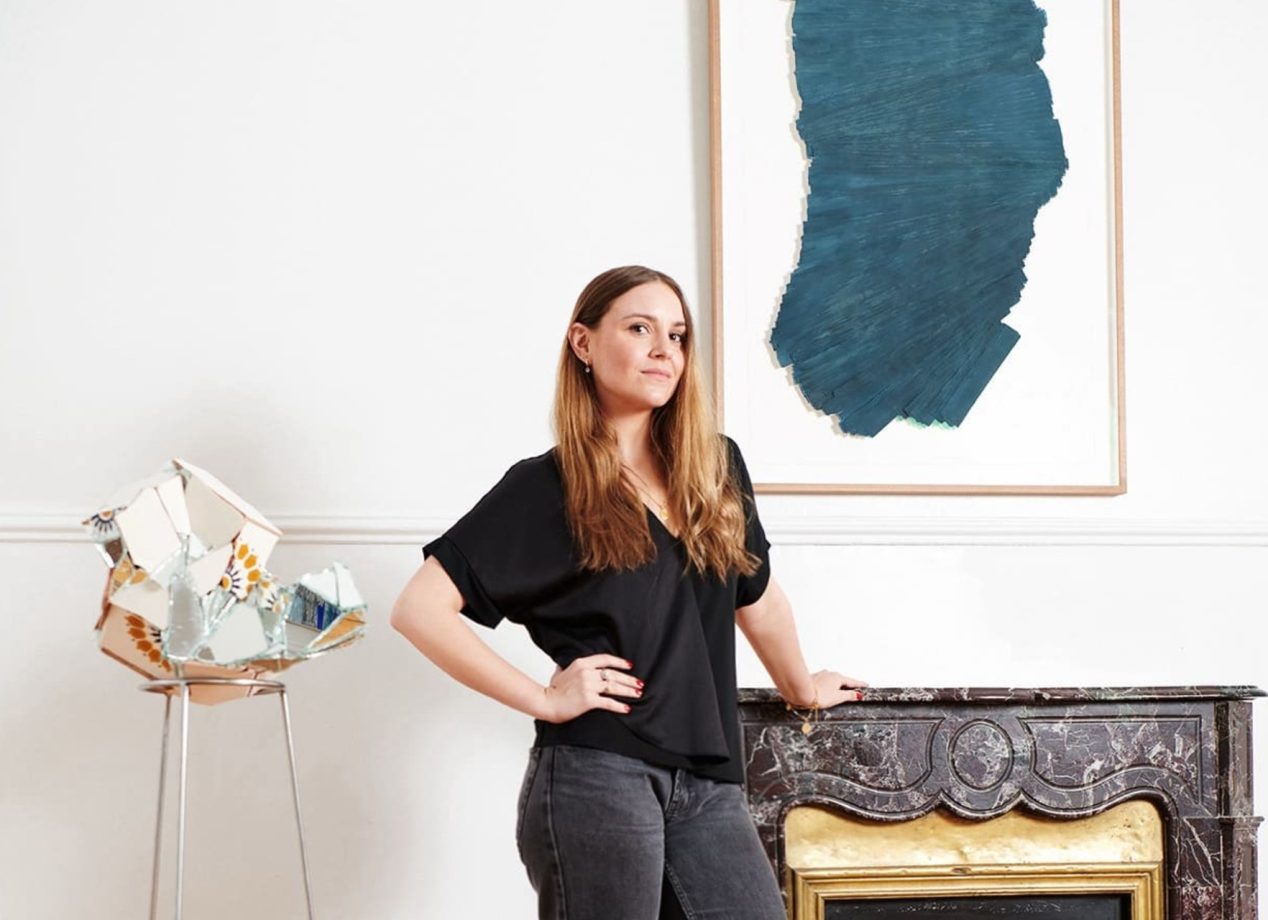MA Contemporary Art alumna Elena Rueda Ruiz de Austri is a Sales Assistant at Pace Gallery, a leading international art gallery in London. She reflects on the beginnings of her academic journey at Sotheby’s Institute, her path to securing her dream role in the industry, and her thoughts on the evolving art market.

Photo: Roberto Maroto. Artworks: Teresa J. Cuevas and Alberto Ardid.
What motivated you to pursue an MA at Sotheby’s Institute?
I had been wanting to study art history at Sotheby’s Institute for a long time and had always been drawn to the Institute’s MA Contemporary Art. I eventually started with a short course, which gave me a solid base and the chance to delve into a subject I’d always been passionate about. I instantly loved the Institute’s teaching approach—placing students in front of artworks, encouraging dialogue, and connecting theory with real experience. After my initial course, I couldn’t imagine doing my Master’s anywhere else!
Looking back, how did the MA Contemporary Art program at Sotheby’s Institute equip you with the tools and knowledge to navigate the art industry?
I truly believe I could not have received a better education. I constantly recommend the program to others! The MA not only provided me with in-depth knowledge of contemporary art, but it also strengthened my critical thinking, offered a clear structure of how the art world functions, and introduced me to the wide range of professional paths within it.
Can you tell us about your journey from graduating at Sotheby’s Institute of Art to your current role at Pace Gallery?
When I finished the MA program, COVID had just broken out. It was a challenging time, as it felt like the start of my professional life was being delayed. I began a remote internship at a gallery until things stabilized. I still remember the joy I felt simply working at an exhibition opening. I started as an intern and was later hired as a gallery assistant.
After some time, I decided to explore the secondary market and move to the sales department. I worked for some time at a gallery specializing in this area, but I quickly realized that what truly inspires me is working directly with artists. After that, I organized exhibitions in Madrid, contributed to an institutional project in Tokyo, and helped several artists develop exhibitions and projects. Eventually, this path led me to my current role at Pace Gallery.
Can you describe the responsibilities and focus areas of your role at Pace Gallery?
Although my official title is Sales Assistant, my role is very broad. Our office manages four artists who are involved in numerous projects. I assist in organizing their exhibitions, both in collaboration with us and other institutions, both public and private. I also oversee the post-sale process for works placed by our office.
I work closely with both clients and artists, so no two days are the same—it’s dynamic, engaging, and never boring!
Pace Gallery is known for representing both established estates and emerging artists. How does this duality shape the gallery’s approach to sales and curation?
I believe this duality makes the curatorial vision particularly rich, as it creates room for dialogue between celebrated artists and new voices. For me, art history isn’t linear or circular—it’s a growing spiral, where every artist draws from the gaze of others and contributes their own. Being part of a gallery that embraces this view is a real privilege.
Are there any recent exhibitions or artists at Pace Gallery that you've been especially excited to work with?
One of the first projects I worked on was the solo booth by Nathalie Du Pasquier at Frieze Masters as part of the Studio section curated by Sheena Wagstaff. Meeting Nathalie and working alongside her on this project was a highlight. I’m currently involved in several projects that I’m equally excited about!
What emerging trends or shifts are you currently observing in the contemporary art market, and how do you think they will impact artists and galleries in the coming years?
One notable trend is the growing importance of long-term artist representation. There’s an increasing focus on building sustainable careers, not just market visibility. I also see a strong movement toward interdisciplinary practices and greater inclusion of underrepresented voices, which is reshaping how galleries curate and how collectors engage with art. I believe this shift will continue to diversify and enrich the ecosystem of the art world.
What advice would you give to someone in the early stages of their art world career?
I think the best advice is to never lose your enthusiasm, curiosity, and willingness to work. The art world is as demanding as it is rewarding!
What advice or tips would you give to Sotheby’s Institute applicants?
If you decide to do an MA program at Sotheby’s Institute, make the most of it—time flies! It’s a unique period when you get to fully immerse yourself in art, travel, meet incredible people who will later become your peers in the art world, visit amazing exhibitions, learn from outstanding professors, and—above all—take your first steps to a beautiful career.
